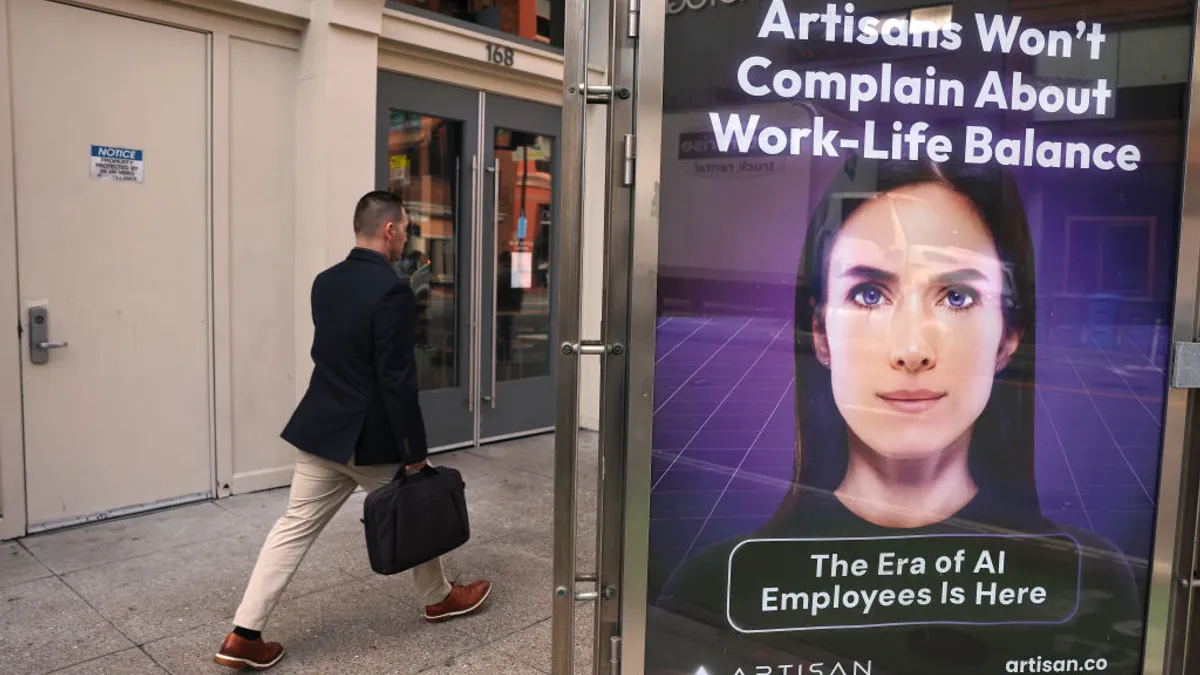Financial stress is one of the biggest challenges facing the U.S. workforce, with 88% of employees reporting regular financial anxiety¹ and 45% of U.S. households projected to run out of money in retirement.² This stress directly impacts morale, engagement, and productivity, making financial wellbeing a business imperative—not just a “nice-to-have.” HR leaders now face the urgent task of supporting their workforce with robust, efficient retirement benefits that support employees’ futures, manage costs, and help maintain a competitive edge.
The Hidden Cost of Financial Stress
Financial stress is widespread, affecting employees at every level. According to Aon’s 2025 Employee Sentiment Study, only 11% of employees receive financial education from their employer. Notably, 53% of U.S. employees say employers should help them save for retirement or long-term needs, making this a top workforce expectation. Financially stressed employees lose an average of 8.1 hours of productivity per week.³ Rising inflation and cost of living pressures further strain those without strong retirement benefits.
Despite the recognized importance of retirement savings, many organizations do not pair these programs with comprehensive financial education. The result is underutilized benefits, knowledge gaps, and a workforce less prepared for retirement. This can threaten employees’ long-term security and increase the risk of delayed retirements—raising workforce costs by as much as 1–1.5% for every year retirement is postponed.³
Meeting Employees Where They Are: A Multigenerational Approach
Retirement readiness varies widely across generations. While retirement savings are a top concern for Baby Boomers, they rank lower for Millennials and Generation Z. Younger employees may not fully recognize the importance of saving earlier in their careers, while older workers often seek guidance on managing risk and withdrawals. Generation X and Baby Boomers are the most dissatisfied with their benefits, highlighting the need for tailored support.³
Effective financial wellbeing strategies are tailored to these differences. Leading organizations address three pillars: managing daily obligations, building a financial safety net, and preparing for the future. The most successful programs go beyond education, offering personalized support through workshops, digital tools, and access to advisors. A behavior-based approach empowers employees to understand their own money attitudes and make smarter financial decisions, regardless of their life stage.
Breaking the Cycle of Complexity and Cost: Why Traditional Retirement Plans Can Fall Short
Managing retirement plans is increasingly complex and high-risk. HR teams face mounting compliance demands, rising costs, and growing employee expectations. The traditional standalone approach—where each organization administers its own 401(k) plan—often misses the efficiencies and savings that come with scale. 56% of HR professionals say their departments lack enough staff to properly manage the workload.⁴ Meanwhile, a 35% surge in excessive fee litigation in 2024 has heightened legal and reputational risks. For HR, this means even more time on compliance, less on strategy, and greater exposure to costly mistakes.
The Power of Scale: How Pooled Employer Plans Transform Outcomes
Pooled Employer Plans (PEPs), introduced under the SECURE Act and SECURE 2.0, represent a shift in how retirement benefits can be managed. By pooling resources, unrelated employers share plan management, compliance, and investment oversight—enabling efficiencies that standalone plans may not achieve. By the end of 2023, pooled plans managed $9.41 billion in assets and served over 1 million participants, with projections reaching $25 billion by the end of 2025.⁵
This model increases bargaining power, driving down fees and improving access to investment options. For example, Aon’s PEP has surpassed $5 billion in live and committed assets and serves over 100,000 employees across 130+ employers. Participating employers have reported a 50–75% reduction in 401(k) workload,⁶ realized average plan cost savings in the 30% range,⁷ and improved outcomes—including an 11% rise in enrollment and a 5% increase in average savings over two years.
A Real-World Perspective
Cheryl Brand, VP of Total Rewards at Ryman Hospitality Properties, whose holdings include Nashville’s Grand Ole Opry, shares how transitioning to a pooled employer 401(k) plan delivered tangible benefits for both employees and the organization:
“From our employee benefit survey, we’re seeing financial wellbeing really rise to the top as being very important and a priority. That’s why we partnered with Aon and joined their pooled employer 401(k) plan. For us, this brought so many benefits for both our employees and the organization.
From the employee standpoint, it truly upgraded their experience—not just through the platform they interact with, but also through the tools, resources, and materials provided to them. Additionally, we saw fund fees significantly reduced for our employee participants, which was huge. That means more of their retirement dollars are actually going toward their retirement, rather than being lost to fees that often aren’t very transparent.
On the employer side, it allowed us to avoid adding additional headcount to administer the plan. We saw a reduction in administrative fees and eliminated much of the fiduciary risk associated with the plan. This meant we no longer had to deal with a lot of the back-of-house work, like 5500 filings and audits, because of the structure of the pooled employer plan.”
Cheryl’s experience highlights how PEPs can deliver enhanced employee value, lower costs, and reduce administrative burdens—freeing HR teams to focus on strategy, not paperwork.
Lead the Future of Workforce Financial Health
For HR leaders, PEPs and behavior-based financial wellbeing initiatives offer practical paths to greater efficiency, reduced risk, and improved retirement outcomes. By meeting employees where they are and streamlining plan management, organizations can build a resilient and thriving workforce—future-proofing both their people and their business.
Is your organization positioned to leverage the power of scale—and deliver stronger retirement security for your workforce? Now is the time to evaluate whether a pooled approach could be the right strategic move for your benefits program.
Sources:
- Aon. "Most of Your Employees are Stressed About Their Finances." September 23, 2025.
- Morningstar. "Retirement Crisis: 401(k)." Morningstar Business Insights. Accessed June 2024.
- Aon, 2025 Employee Sentiment Study, pp. 46, 71, 117.
- Society for Human Resource Management (SHRM). "2023–2024 State of the Workplace Report." Accessed June 2024.
- Georgetown Center for Retirement Initiatives. "Are PEPs Reshaping the Retirement Plan Market?" 2025.
- PLANSPONSOR. "Aon PEP Surpasses $5B in Assets and 100K Participants." 2025.
- Aon plc. "Combating Inflation and Market Volatility with Pooled Employer Plans (PEPs)." 2025.










